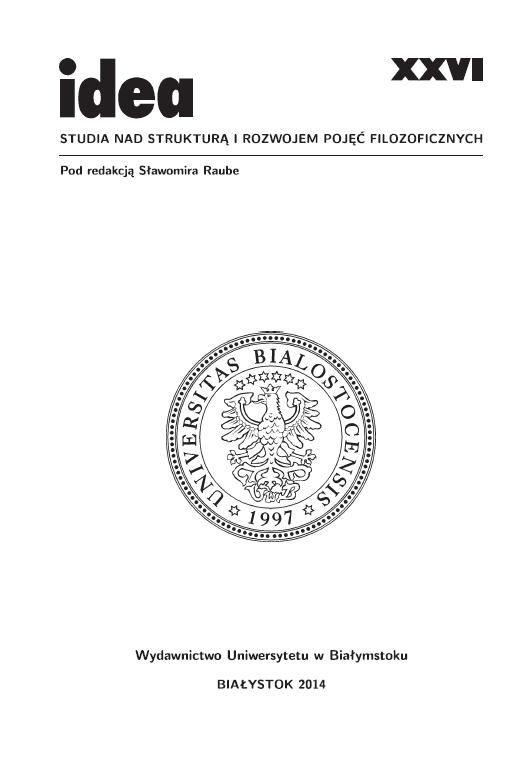
We kindly inform you that, as long as the subject affiliation of our 300.000+ articles is in progress, you might get unsufficient or no results on your third level or second level search. In this case, please broaden your search criteria.

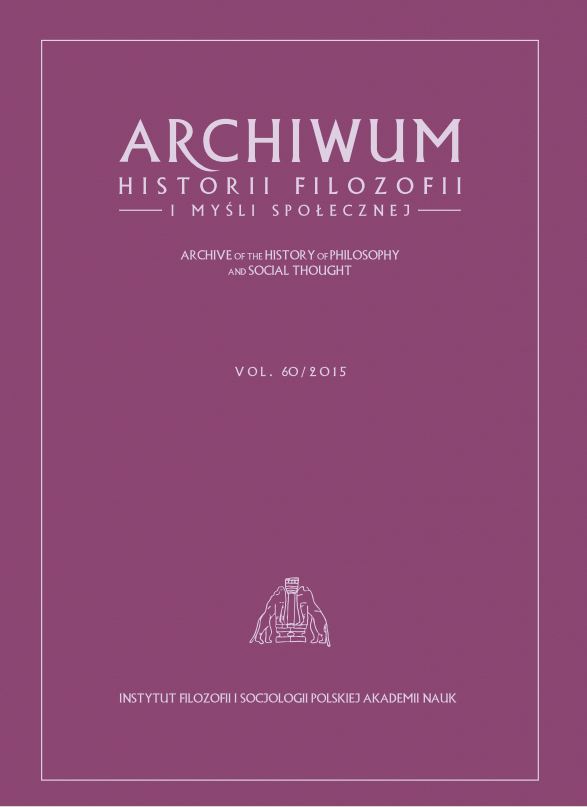
The presented paper argues that the purpose of allegoresis put forward in the Derveni papyrus is primarily apologetic, for its author seeks to reconcile the Orphic view of the world with that of the Anaxagorean school. Being a pious Orphic himself, the Derveni author regards, nevertheless, the authority of Orpheus as seriously challenged by the Presocratic physicists. Accordingly, he aims to show that the ostensibly naïve and/or blasphemous ideas that can be found in Orpheus’ poem (e.g. castration, cannibalism, incest) are in fact complex allegories of profound scientific truths. Thus, when translating the Orphictheogony into the language of Anaxagorean cosmology, the Derveni author suggests a sort of aggiornamento, as he endeavors to bring Orpheus’ poem up to date by demonstrating that it anticipates the major concepts of Anaxagorean physics.
More...
The paper presents the doctrine of universals formulated by Alexander of Aphrodisias, the most important and most influential ancient commentator on Aristotle. Point of departure for the paper is the specific approach found in the ancient debates on universals, namely their epistemological perspective. The paper shows that Alexander’s doctrine of universals is in fact just a part of his broader views on epistemology, science and the proper object of scientific cognition. An important achievement by Alexander is that he shows that the problems posed by Plato and Aristotle may be solved without positing any new kinds of entities – universal entities – and that it is enough to assume that individuals may be objects of scientific inquiry insofar as they participate in universal natures. The paper presents first Polish translations of key texts on universals by Alexander (such as Qu. I.3, Qu. II.14).
More...
This study investigated acedia in existential and moral contexts, using its descriptions from antiquity through the Middle Ages, the Renaissance, modern and postmodern times. I have chosen to work with six definitions of acedia. These are: carelessness of heart (the Bible), narcissism (Evagrius of Ponticus), contradiction in will (St. Augustine), sluggishness of the mind which neglects to begin good (St. Thomas, Summa Theologica,II.2.q 35.1), demonic despair of will to be oneself (Søren Kierkegaard), and self-contempt (Jean-Luc Marion). My approach is inspired by philosophical investigations of Evagrius, St. Augustine, St. Thomas, Kierkegaard, and Marion. As we shall see, it is impossible to draw a clear line between carnal and spiritual issues of acedia. Contrary to common opinion, interconnections between acedia and sloth are multilayered and complex, yet the nature and significance of this relationship is incomprehensible for contemporary psychologists who try to turn the attention away from acedia’s dialectical nature. Hence I emphasize that acedia always concerns both carnal and spiritual (not only mental) disorders. If we look at this from the point of view of St. Thomas, we will see that acedia is contrasted to love, not to accuracy. Sloth is evil because it denotes blame worthy sorrow for spiritual good. Seven capital vices relate to the consequences of improper human activity but acedia refers to the condition of people who are unable to perform their social duties, want to do nothing and avoid undertaking moral challenges in the world because of their laziness, passivity, weakness of will, indecision, cowardice. A certain weariness in working, shortage of esteem, contempt for virtuous people are main symptoms of acedia. Oppressive acedia’s sorrow is an inner consequence of being saddened about the good things. Acedia is associated with long-standing frustration of desire. The paper discusses some philosophical and educational strategies for helping to overcome acedia as an evil in appetitive movements.
More...
In numerous scientific studies of the different levels of generality, Marsilio Ficino, the fifteenth-century Florentine philosopher, is presented primarily as a Platonist or neo-Platonist, the first translator of all the works of Plato and of Plotinus from Greek into Latin, and the author of Theologia platonica de immortalitate animorum where he defends the immortality of the human soul in an encyclopedic manner. Ficino is also commonly referred to as a humanist and a popularizer of the hermetic thought. Relatively rare, however, researchers point to the other sources of Ficino’s philosophy, while the Aristotelian-scholastic tradition is not only well known to the Renaissance philosopher, but it also constitutes an important element of his conception, which is reflected on many of its levels, i. a. in the structure and terminology of his works. The main purpose of this article is to show some rudimentary aspects of the cognition process developed by Ficino’s in his Platonic Theology, with particular emphasis on the crucial terms used by the philosopher. The contents of this process resemble (at least in certain respects, not necessarily en bloc) the ones used in the Thomistic epistemological terminology or which directly refer to typical scholastic issues. The Ficinian process of cognition includes the activity of: senses, imagination, fantasy and mind. The function of imagination in the Florentine philosopher’s thought is the same as the one which Aquinas assigns to sensus communis, and imagination plays precisely the same role as vis cogitativa in St. Thomas theory of knowledge. When it comes to mind, it can be interpreted in a wide and narrow sense. In this first one, it is both reason, of which the distinctive feature is discursive reasoning, and the mind (in the narrow sense), of which the activity is contemplation. Describing the activity of reason and the mind in the narrow sense, Ficino also employs terms widely analyzed in the scholastic period, i. e. active intellect and possible (material) intellect, referring in this way to a dispute about mononoism, which was hotly debated in the second half of XIII century under the influence of the Averroean interpretation of Aristotelian De anima.
More...
The main objective of the paper is to analyze the concept of validity (Geltung) presented by Hermann Lotze in second chapter (entitled „World of Ideas”) of the third book of his Logic published in 1874. Contrary to wide spread opinion (propagated, among others, by Martin Heidegger) this concept is not ambiguous. Interpretation of Plato᾽s world of ideas,offered by Lotze, presents a coherent theory of Geltung. One can distinguish four aspects of this theory: ontical, semantic, pragmatic and phenomenological-metaphysical one. Validity of the content of judgment pertains to the ontical aspect and is opposed to the judgment conceptualized as the mere act of judging. The distinction between the act and its product plays here the main role. The semantic aspect is recognizes the reference of objective valid conceptual content of judgment to object, which is intended in this content. The pragmatic aspect the same objective conceptual content considers in its subjective (formal) way, as an act of recognition by the judging subject. Phenomenological-metaphysical aspect shows that we have also other types of the access to the world (i.e. by feelings, moods or practical activity), more than just one which is offered by the conceptual content of judgments.
More...
Lotze’s work entitled „World of Ideas” is the second chapter of the third book of System der Philosophie. Erster Teil. Drei Bücher der Logik (published in 1874). This text had an exceptional impact on the development of German philosophy (especially Marburg and Baden School of neo-Kantianism, Husserl’s and Scheler’s phenomenology and Frege’s logic) because of the concept of validity (Geltung) which Lotze had presented here as a foundation of his interpretation of Plato’s theory of ideas.
More...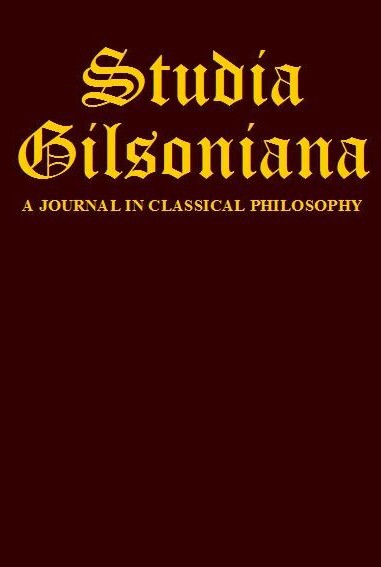
Charmides is a dialogue highly indicative of the importance that the prologues to Plato’s works have for our understanding of the whole spirit and philosophical content of each dialogue as a whole. It is representative of the Platonic tendency to always combine philosophical content with dramatic form through narrative and drama, in order to enhance the reader’s and audience’s insight into the inquiries of his philosophical work. Following this line of presentation, the prologue of Charmides prefigures the understanding of the central themes of the dialogue; focusing on the depiction of Socrates as a therapist and of Dialectic as a therapy or a kind of remedy, which through the process of dialectical engagement and interaction reestablishes the relation of each interlocutor to his own self.The narrative about the Thracian doctors of the king and god Zalmoxis and their special medical knowledge, foreshadows the major philosophical issues which are examined in the sequence of the dialogue. Socrates’ reference to the good doctors and his criticism of the Greek doctors who ignore the whole that needs to be cured, reveals the central demand for the psychosomatic unity of man and the priority of the healing of the soul over the healing of the body. The holistic Zalmoxian medicine and theory of health corresponds to the first step of the Socratic Dialectic. Through the narrative about the Thracian doctors of Zalmoxis, Socratic-Platonic Dialectic has already begun to evolve, following a movement with clearly defined direction, namely from the part to the whole, where the part denotes and signifies the body and the whole denotes the psychosomatic unity of the human being. Sōphrosunē is already involved in this narrative since the incantations invoked by Socrates, which are identified with the “beautiful speeches,” induce sōphrosunē on which the well being of the soul depends. This raises the question as to whether these doctors apply medical knowledge which has a specified epistemological content, or knowledge equipped with a universal character—in the sense of being also prior to all other kinds of knowledge—which transcends the usual confines of the medical art.Charmides is invited by Socrates to look deep within himself in order to discover if he possesses sōphrosunē, and what sōphrosunē really is. That’s what Charmides is doing by formulating his first two definitions of sōphrosunē. Dialectic now follows a movement from without to within. Charmides’ first and second definitions reflect the social status to which he belongs, the corresponding behavior, and the inner psychic qualities (e.g., youthful shyness) of a person or persona who represents the system of values surrounding traditional virtue and the aristocratic conception of the ideal of “kalos kagathos.” It is probable that the dramatic time of the dialogue, which coincided with the outbreak of the Peloponnesian war, was associated with a criticism of the traditional view and model of virtue.When sōphrosunē is defined as “doing one’s own things,” Dialectic still has the tendency to move from without inwards, but this movement now is implemented in the field of praxis (action). Platonic Dialectic uses the device of change of interlocutor in order to signify the transition to a more demanding level of inquiry and thought. This definition of sōphrosunē, “doing one’s own things,” on the basis of a proleptic reading, stimulates us to trace the relation between sōphrosunē in Charmides and dikaiosunē (justice) in the Republic. What is important in the Socratic elenchus of this definition is that it highlights the connection between prattein (doing) and prattein tagatha (doing the good), between prattein and works (erga), and between the beneficial and the good. It is clarified that only the makings of good things are praxeis (doings) and that what is of harm must be avoided as “alien.” The definition of sōphrosunē as “doing good things” re-orientates Dialectic, which now starts moving from praxis to theōria, because “doing good things” presupposes knowing what is good. But if agathon (good) is what is kindred to oneself and one’s own, doing good things, or doing simpliciter, i.e., praxis, presupposes self-knowledge. Any practitioner of good must be a self-knowing agent.The Apollonian ideal of self-knowledge (know thyself) is construed as a “greeting” of the god to worshipers who enter the temple, not as a moral counsel or as a piece of advice. This distinction implies the difference between a knowledge conveyed from without and a knowledge discovered by insightful inner search of one’s self. Within the passages 165c to 175a, sōphrosunē is presented and examined as “the knowledge of what one knows and what one does not know.” It has been claimed that in this part of the dialogue, the Socratic model of self-knowledge is subjected by Plato to the Socratic elenchus, where he attempts to make a criticism of it.I believe that this section of the dialogue is an extended excursus, aimed towards introducing and examining a model of self-knowledge different from that of Socrates, Critias’ model of self-knowledge. This model of self-knowledge poses a whole series of philosophical problems; the relation between the subject and the object of knowledge, the possibility of their identification or the distinction between them, the possibility of the existence of an internal and external object of knowledge, the relation of this model of self-knowledge with other kinds or domains of knowledge, and the question whether external knowledge or knowledge of other knowledges is a constituent of knowledge of knowledge. The question of the possibility of knowledge of knowledge is not definitely rejected, especially if we consider that in all of this discussion there is a hint towards the way in which philosophy works and relates to other kinds of knowledge.I believe, however, that in the last part of the dialogue, where the knowledge of good and bad emerges, Plato again meets Socrates and becomes reconciled with him. The only knowledge that is useful and beneficial is knowledge of good and bad. In this way Plato chooses to put forward a self-conscious model of self-knowledge, which does not presuppose, as Critias’ model does, the critical examination of knowledge or the critical distance from knowledge. This self-conscious model of self-knowledge is connected with the knowledge of good and bad. On the one hand doing of good presupposes knowledge of good and bad and on the other, “doing one’s own things” presupposes self-knowledge. The possibility of knowing good and bad is ensured by each person, either through looking deep within himself or by orientating towards the Idea of the Good itself.
More...
The article begins with the statement that there are three concepts of Europe historically significant. The first concept of Europe looms out in the context of the clash between the ancient Greeks and the Persians, the second one is induced by Christianity and Islam meeting head-on whereas the third concept results from the European civilization confronting the cultures of the newly discovered peoples inhabiting other continents. It is just in the context of the indicated clashes that the concept of Europe is shaped as a phenomenon diversified not only geographically but also in terms of civilization as regards other cultures or civilizations. The article then concerns with the concept of Europeanism which in the cultural sense was crystallized in Greece at the turn of the fifth and fourth centuries before Christ. It emerged on the background of the opposition between the Greeks and Asians as well as other peoples, which were referred to as barbarians by the Greeks. The article concludes that it was culture and freedom which constituted two arms of Europeanness shaped by the ancient Greeks.
More...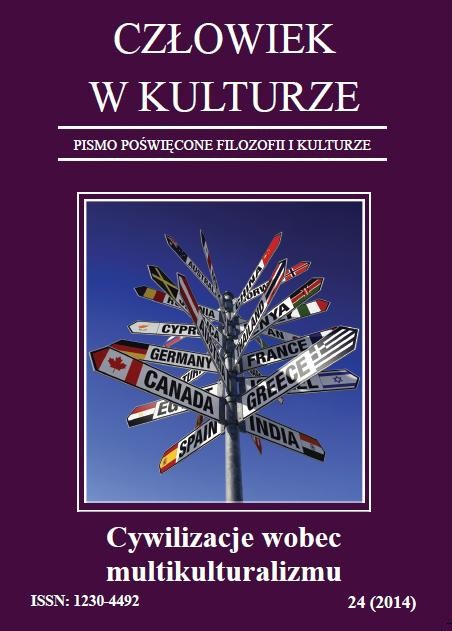
It is obvious that from the very beginning Christianity considered oneself a religion of the Logos, as a religion compatible with reason. In this sense, Christianity had not the precursors among other religions. Does this mean the superiority of Christianity, Europe and the Philosophy of the other religions and continents? Here we have something paradoxical: Christianity through its universalism can discover the value and truth in all traditions, these elements by which we unite with everyone. But how can be something universal, if it is within the context of a just culture and religion? Answer contain the following words: “In the beginning was the Word (Logos), and the Word was with God, and the Word was God” (John 1.1). It was reason-Word (Logos) with the universal dimension allows to conduct a real dialogue between different cultures and religions. And therefore, if a culture is potentially open to dialogue, wishes to hold a universal dimension. And that is why Christianity is a specific and at the same time universal religion.
More...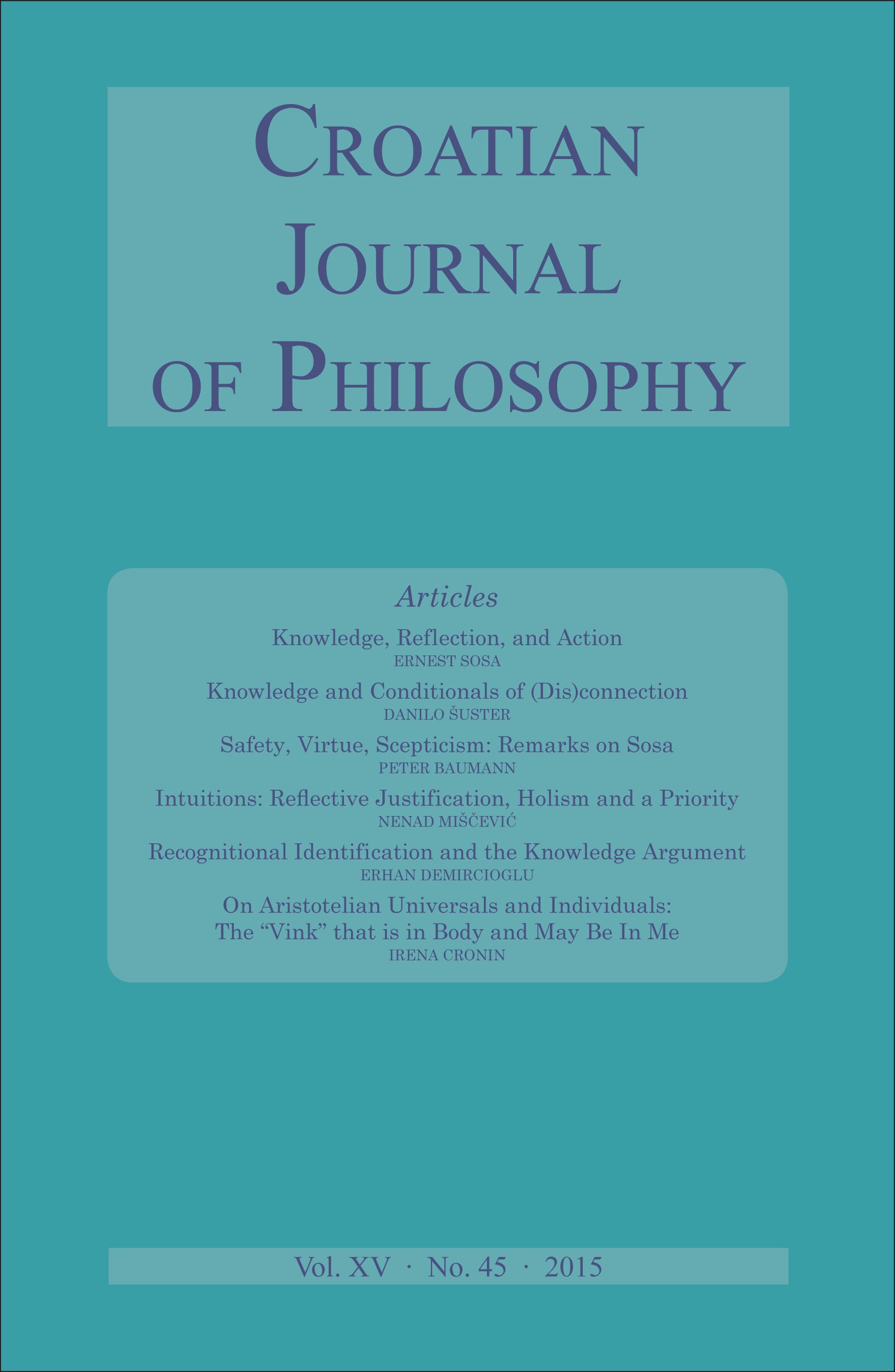
G. E. L. Owen, in his influential paper “Inherence,” talks of “vink,” a name he has created for a particular shade of the color pink, and this “vink” serves as an individual in the Aristotelian category of quality. Owen was one of the first to aim to discredit the belief that J. L. Ackrill and his camp espoused, the belief that Aristotle thought that “general attributes are not in individuals, particular attributes are not in more than one individual.” I postulate that there is nothing here that does not preclude the existence of transferable nonsubstantial particulars, and base this view on passages from Aristotle’s Categories and certain examples found in Ammonius’s commentary and On Colors. Given this, a nonsubstantial particular of “vink” would not have to rely on having inhered in just one particular body to have existence, however, it would have to inhere in at least one particular body.
More...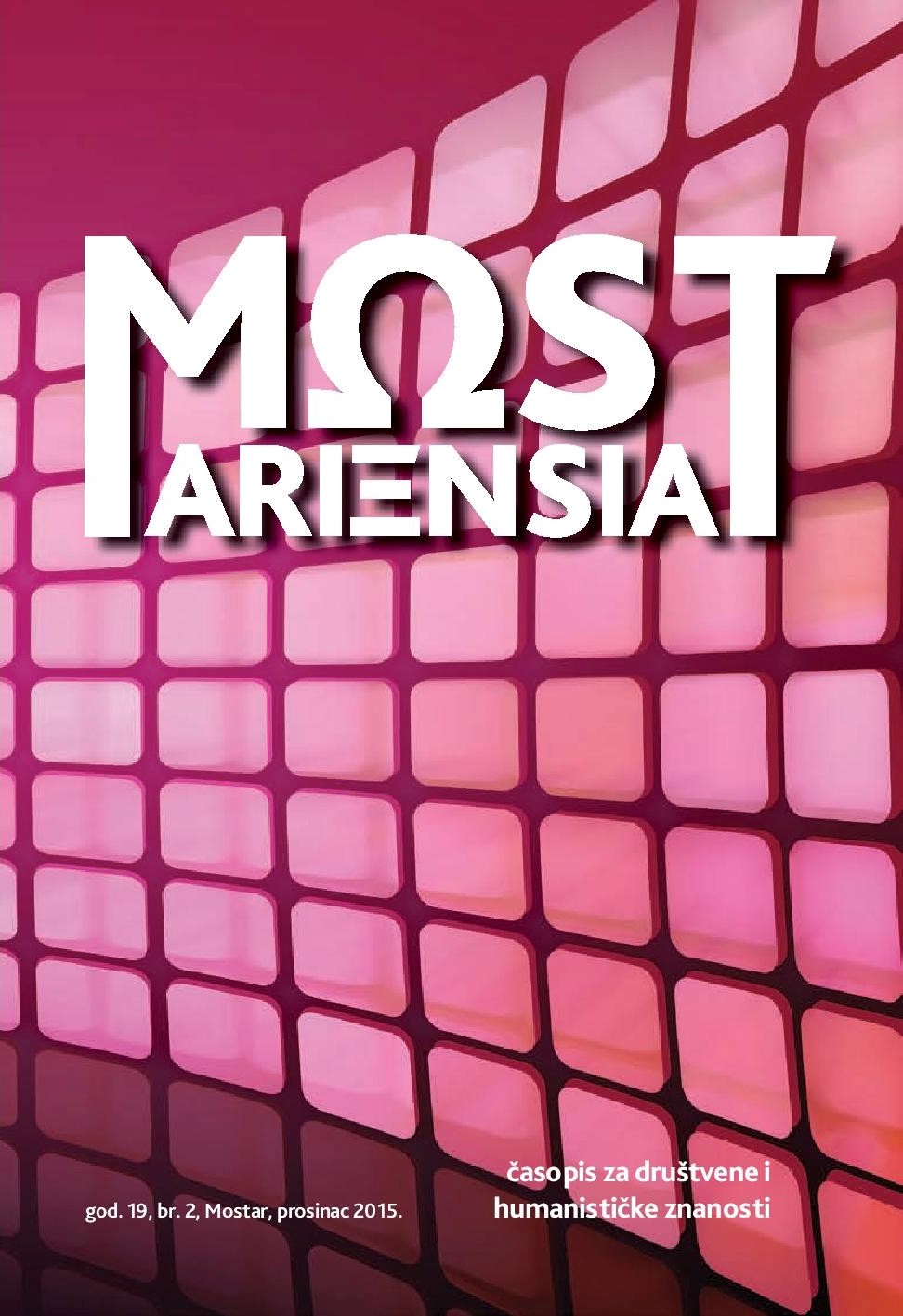
The authors deal with Aristotle’s understanding of mathematical objects within his realistic approach,with special emphasis on his work Metaphysics. According to Aristotle, mathematical objects do not exist separately from their perceptible substance, moreover, mathematical objects are not,neither may be, substance. If they were substance, then it would be possible to put together some material substance from lines, dots and numbers. When mathematical science observes its objects, it sees them as if they were substance, even though they are really not. Although mathematical objects are not in the mode of being - οὐσίαι, Aristotle would say that they are being- ὄντα, because it is true to say that they are beings (which are separated), as well as the things which the substance is the foundation of - which are not separated, but what is not separated is also some being - τὸ ὄν.Here is included the criticism of Plato’s understanding of mathematical objects because Plato understands mathematical objects as real and separated from perceptible or visible areas. With regard to the interpretation of Aristotle’s realistic philosophy of mathematics, the authors point out that it can be labeled as abstractionism, fictionalism and qua theory. In the end the authors touch upon the nature of mathematics from Aristotle’s time to the 18th century, noting that during that period mathematics was understood as a science of sizes, those uninterrupted (continuous) - to be studied by geometry, and those interrupted (separated, discontinuous) - to be studied by arithmetic.
More...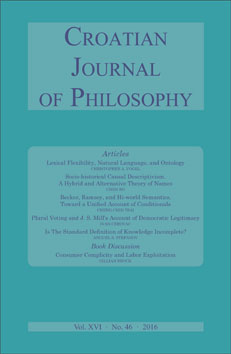
The aim of this paper is to suggest a new interpretation to the Gettier problem by showing that the standard JTB definition of knowledge is not epistemologically incomplete, being at the same time formally incomplete. The Gettier problem is shown to emerge through the implicit selfapplication of the JTB definition of knowledge to prove its own incompleteness. A conclusion is drawn, which runs counter to the traditional view that the problem necessarily requires a conceptual amendment of the standard definition, in spite of the formal incompleteness of the latter. The Gettier problem is construed to be related to the ancient Meno problem within a contemporary justificational discourse.
More...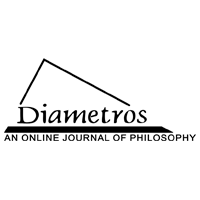
The article deals with the question of the value of the history of philosophy for philosophical research. In the first part, it proposes a classification of possible functions realized by references to the philosophical tradition in a philosophical treatise. The proposed typology is meant as a practical tool for identifying and comparing the usage of the past in philosophical texts of any historical period. The second part of the paper illustrates how the classification can be employed by applying it to determine the functions of Aristotle’s discussions of the pre-Socratic doctrines in Metaphysics A.
More...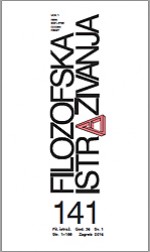
The history of philosophy, seen as an activity of perpetual rereading of philosophy’s past in the light of new contexts, always has to be faced with the interpretative methodological challenges of its own time. The contemporary interpretation of the Presocratics has to: give anew an answer to the question of what represents the Presocratic philosophy; determine the interpretive approach in accordance with the methods that are used during that process; evaluate how much today’s world view can digress from historic-philosophical reality; but also establish minimum standards for methodologically appropriate interpretation. Within this theoretical framework, through detecting some contemporary interpretative tendencies of the Presocratic philosophy, this text problematizes the identity of the Presocratics, analyzes the approaches of “philosophical synthesis”, “philological analysis” and “philosophical analysis”, brings out the endeavors for overcoming certain interpretive stereotypes, but also lays down the founding conditions for a methodologically opportune interpretation. In addition, this paper points out, analogously to the view-point that philosophy is an open and endless process, the opinion that history of philosophy, as immanently philosophical discipline, cannot lay down permanent methodological standards.
More...
Referring to Nietzsche’s monograph Philosophy in the tragic age of the Greeks, Eugen Fink criticized the disappearance of the notion of being and added that the mentioned work is “imbued with the unique charm”. It is a very large and unusual contrast “between Nietzsche’s intuitive grasp of substantial destruction and its understanding”, primarily finding it in its relation to the Greek philosophy. In the Greeks, Nietzsche discerns bold courage for evidence of philosophy of life, unceasingly seeing, with his inner eye, a “sophisticated communication among great spirits” in the history of Pre-Socratic thinkers. Above else, in Pre-Socratic thinkers Nietzsche recognizes great metaphors – in other words – the genuine intuition, suppressed (through time) and finally annihilated by reflections of a reasoning mind.
More...
Although Parmenides’ doctrine of Being offers a reason for overcoming the difference between the human and the divine, structure of his poem lies in this difference. The author approaches the reasons for why Eleatic philosopher needed mythos and verses to express his insight that only Being is by coming close to the thesis that coherence of Parmenides’ poem has been preserved by the possibility that it was conceived as the highest expression of the tensions characterizing human existence. Any human can think identity of being as human and divine, but this thought he cannot make part of his world. The difference could continue to be overcome only by keeping silence about the divine as divine.
More...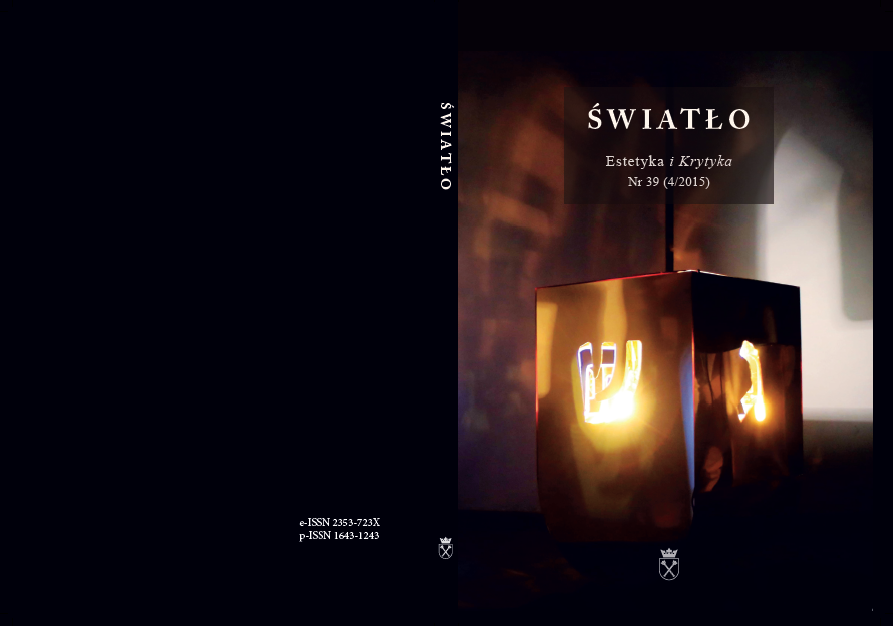
W artykule analizuję związki między tradycyjną filozofią emanacyjną a współczesnymi teoriami stworzenia świata, szczególnie teorią Wielkiego Wybuchu. Podejmuję wstępną refleksję nad warunkami odnowienia emanatyzmu dzisiaj.
More...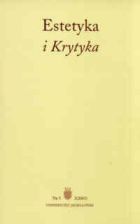
In my manuscript I engage Jonas Barish’s claim that Plato engenders an antitheatrical prejudice, arguing that Plato’s critique of poets’ creation (tragic and comic) is marked by ambivalence. To emphasize the tensions in Plato’s dialogues is not only to problematize the negative judgements against tragic and comic creation, but also to perceive Plato’s particular use of theatre in its metaphoric dimension to describe, inter alia, the phenomenon of human existence or ideal legislation. My main hypothesis is that to perceive this complexity, we must take into account the literal and metaphoric dimensions of poetry and theatre. Only then can we capture the genuine theatrical potential of Plato’s dialogues: not only critical but also reformative. Moreover, new possibilities emerge when we consider Plato as a playwright, and Socrates as his privileged character. In light of this complexity, we can contest Jonas Baris’ declaration of Plato as progenitor of the ‘antitheatrical prejudice’.
More...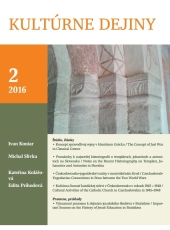
The reason for this debate was an attempt to get the views of two historians of philosophy of the nature of their own discipline over to the readers of the Cultural History journal. The discussion is focused on the question: What is the nature of philosophy like? For over two decades both academics have engaged in the basic research (translation, analysis and interpretation) of the source literature of ancient philosophical thought. Thus, they step before their students and readers with certain pre-understanding of the nature of their own work. The aim of the debate is to present their understanding of the history of philosophy.
More...